Forks and Funding Streams
By Dani Robbins
Re-published with permission from nonprofit evolution blog
 I once heard a local Executive Director say that fundraising in a non-profit was like a new restaurant looking for investors by asking people to pay for forks. That’s exactly right! It’s illogical, yet it’s exactly right.
I once heard a local Executive Director say that fundraising in a non-profit was like a new restaurant looking for investors by asking people to pay for forks. That’s exactly right! It’s illogical, yet it’s exactly right.
Nonprofits raise money through a myriad of sources, often one part of a program, project or piece of equipment a time. Then once a year, or more often, we submit reports on the use of those funds.
Grants, which used to fund general operating, are now far more often restricted to the priorities areas of the funding institution. Major donors fund in a similar way, with fewer restrictions usually, but still often to support a specific program or project and for a specific purpose.
It’s how it’s done, both on the side of the giving, and also on the side of the asking.
Granting intuitions – which for the purpose of this post includes corporate, community and family foundations as well as government awards – fund portions (and occasionally all) of projects, programs and staff; some fund only supplies, capital expenses or materials.
 Donors and funding institutions absolutely and unequivocally have the right to support whatever they want in whatever method they choose.
Donors and funding institutions absolutely and unequivocally have the right to support whatever they want in whatever method they choose.
It’s the nonprofit leader’s role to decline to accept funding that doesn’t meet their mission or make sense for their agency. The caveat to all this, of course, is that those restrictions are not just that one foundation; they’re most foundations and other funding sources too.
Everyone funds like that and we all fundraise like that too — to support forks. Forks – or in the nonprofit world, programs, projects or things – are important, and so are utilities, rent, staff, and programming.
Please let me be clear. This post is not intended to insult or be in any way disrespectful of the many, many institutions and people who support local organizations. We are grateful to you!
This post is intended to question the efficacy of the status quo.
I am not naïve; I’ve been in this field for 20 years. I know that part of how we got here was a lack of accountability. There was a lot of good feeling and a minimal amount of impact. I know there are still nonprofits out there not tracking their programs, not measuring outcomes and spinning their wheels but not advancing their missions.
I also know there are many more non profits that are running good programs, measuring the impact of those programs and being excellent stewards of the community’s resources. They’re also spending a lot of time and energy to raise money and report on that money; time and energy that is taken away from programs.
When I ran the Boys & Girl Clubs of the Western Reserve, we wrote and usually received (and reported on) around 50 grants a year. We asked many more donors each year for financial support. We received money from the United Way, Boys & Girls Clubs of America, the Ohio Alliance of Boys & Girls Clubs. We hosted events and had an endowment.
A large portion of the money we received was restricted.
We tracked every restricted dollar to ensure we spent it the way the donor intended. We were transparent in our business practices and followed financial management best practices.
That is good financial stewardship.
It’s also expensive and time-consuming. However, it is critically important and not free.
Someone has to track, coordinate and manage all the pots, and agencies can usually only change a percentage of such costs to the grant. It’s labor intensive. It’s expensive. It’s how it’s done. The current non-profit funding model works.
It’s not unacceptable, but it is illogical.
I can’t imagine anyone planned it to be like this. There is no version of a past that I will believe that has donors, foundation, corporate and government leaders sitting around table envisioning a funding system that this one.
By this system, I mean one program being supported by three different grants each paying for a different percentage of the program staff salaries (and a much smaller percentage of the program leadership’s salary) with yet another grant paying for materials and special event income making up the difference.
There’s got to be a better way.
The nonprofit service delivery system has been greatly improved through technology, professional and leadership development opportunities, improved tracking and a lens that is focused on impact. Income generating efforts have similarly evolved, with the introduction of social enterprise and expanded efforts to embrace major donors and mergers when appropriate.
It’s time to re-imagine the funding model.
What else is out there? How else can we ensure financial stewardship, maintain donor confidence and demonstrate our impact? What else can we do to ensure the nonprofits in our communities have the resources they need to impact their corner of the world?
Let’s come up with a new plan: I’d rather do that than raise money for forks any day of the week.
As always, I welcome your experience, insight and ideas.


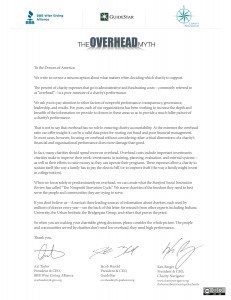
 As they say, the proof is in the pudding which is what inspired today’s blog post. The pudding, of course, is an article that washed into my email inbox from LinkedIn on November 30, 2013. The author was John Wasik and the article was titled “
As they say, the proof is in the pudding which is what inspired today’s blog post. The pudding, of course, is an article that washed into my email inbox from LinkedIn on November 30, 2013. The author was John Wasik and the article was titled “
 The most important question in all marketing is one we broached in
The most important question in all marketing is one we broached in  As you work to perfect your strategies, it is important to take some time to test it through what Safko calls segmenting.
As you work to perfect your strategies, it is important to take some time to test it through what Safko calls segmenting.
 I was very new to the company.
I was very new to the company.

 Wow! We have lots of money in our community.
Wow! We have lots of money in our community. Here is a recipe I suggest you consider when it comes to your prospect identification strategy:
Here is a recipe I suggest you consider when it comes to your prospect identification strategy: Oh heck . . . if you don’t want to follow this simple, sound and proven advice, then hire me. I am happy to be your water witch. Just give me a moment to run out back and pick a fresh Y-shaped stick off of my magic fundraising tree.
Oh heck . . . if you don’t want to follow this simple, sound and proven advice, then hire me. I am happy to be your water witch. Just give me a moment to run out back and pick a fresh Y-shaped stick off of my magic fundraising tree. I was having breakfast this week with a friend and fellow consultant and we were discussing resource development efforts, including events and grants. By now I’m sure you are well aware, I’m not a huge fan of organizations hosting multiple events. Events are expensive, labor intensive and don’t usually generate a lot of income.
I was having breakfast this week with a friend and fellow consultant and we were discussing resource development efforts, including events and grants. By now I’m sure you are well aware, I’m not a huge fan of organizations hosting multiple events. Events are expensive, labor intensive and don’t usually generate a lot of income.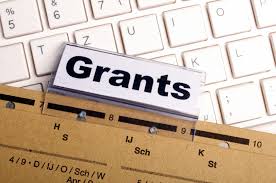 Grants, which are often 30% to 50% of an agency’s budget, more if they receive United Way funding, are one way. Yet, they too come with a cost. Most agencies get somewhere between 50% to 80% of the grants they submit. That means that the time spent on writing the 20% to 50% of the grants that don’t get funded is time lost. For the grants that are secured, there are reports to be written, dollars to be tracked, objectives to reach and programming to introduce. All of which is as it should be, and none of which is without cost.
Grants, which are often 30% to 50% of an agency’s budget, more if they receive United Way funding, are one way. Yet, they too come with a cost. Most agencies get somewhere between 50% to 80% of the grants they submit. That means that the time spent on writing the 20% to 50% of the grants that don’t get funded is time lost. For the grants that are secured, there are reports to be written, dollars to be tracked, objectives to reach and programming to introduce. All of which is as it should be, and none of which is without cost.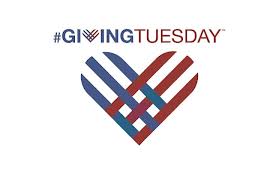 The turkey has been consumed (and so have the leftovers). Black Friday came and went with only a few bumps and bruises for Americans. Cyber Monday also came and went with consumer dollars flying all over the information super highway. Are you ready for one last hurdle? Today, is
The turkey has been consumed (and so have the leftovers). Black Friday came and went with only a few bumps and bruises for Americans. Cyber Monday also came and went with consumer dollars flying all over the information super highway. Are you ready for one last hurdle? Today, is 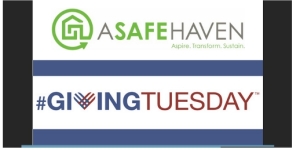
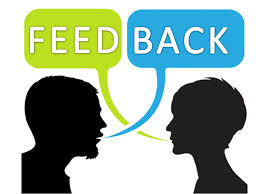 I read this and imagine my organization with engaged donors engaged in open communication, positive feedback, while building a better organization. Ahhhh, nirvana, but wait . . . did he say negative feedback, too?
I read this and imagine my organization with engaged donors engaged in open communication, positive feedback, while building a better organization. Ahhhh, nirvana, but wait . . . did he say negative feedback, too? David was a tenured college professor. While an expert in his field, he knew very little about computers; just enough in fact to get on a network and ask for help. Fortunately, a more experienced user came to his aid, never failing to give just the right advice.
David was a tenured college professor. While an expert in his field, he knew very little about computers; just enough in fact to get on a network and ask for help. Fortunately, a more experienced user came to his aid, never failing to give just the right advice. A few short years ago, we couldn’t have even imagined such a scenario. In the past, proximity and commonality brought us together. We had family and close friends; help came from familiar places.
A few short years ago, we couldn’t have even imagined such a scenario. In the past, proximity and commonality brought us together. We had family and close friends; help came from familiar places. And I already see that I’m not adapting fast enough to keep pace with the innovations. The technology school bus isn’t waiting for me!
And I already see that I’m not adapting fast enough to keep pace with the innovations. The technology school bus isn’t waiting for me! Many of you probably didn’t notice yesterday that we didn’t publish a blog post at DonorDreams. Yes, it was Thanksgiving, but that wasn’t the reason why we missed a day. The truth of the matter is that I was being treated to a Dallas Cowboys Thanksgiving football game at AT&T stadium.
Many of you probably didn’t notice yesterday that we didn’t publish a blog post at DonorDreams. Yes, it was Thanksgiving, but that wasn’t the reason why we missed a day. The truth of the matter is that I was being treated to a Dallas Cowboys Thanksgiving football game at AT&T stadium.